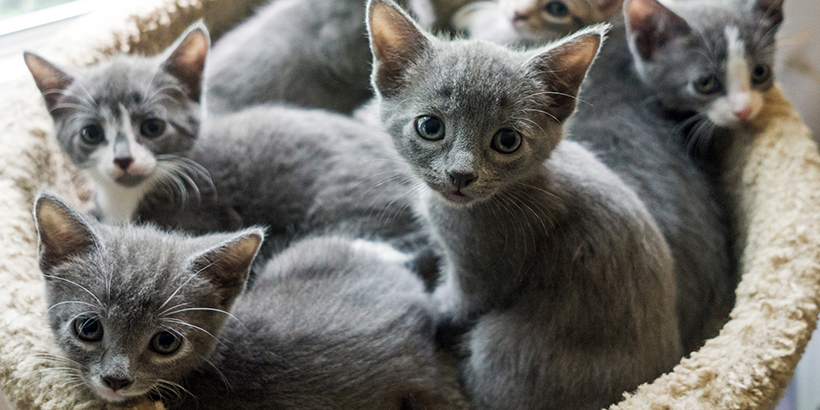
Spaying and neutering pets works to prevent pet overpopulation and has health benefits.
The following are some common misconceptions about spaying/neutering your pet:
Myth: Your female should have one litter before she is spayed.
The Truth: Spaying your female pet before her first heat cycle (at approx. 6-9 months of age) reduces the risk of mammary cancer in dogs by at least 50% and by as much as 85-90% in cats. The longer a female goes unspayed, the greater the risk of developing mammary cancer or Pyometra. Pyometra is an infection of the uterus which can result in a very rapid decline in health or even death. The only treatment for Pyometra is an emergency spay procedure. Additionally, a cat’s instinct to reproduce is extremely strong. They howl, rub up against everything and spray urine to attract males. Their heat cycles can last for 3 weeks. During the breeding season (fall and spring) they may go into heat every 2 weeks.
Myth: Spaying and neutering will make your pet fat.
The Truth: Any pet can become overweight from overfeeding and a lack of exercise. While spay/neuter can slow down a pet’s metabolism a bit, careful feeding and plenty of exercise will counteract this side effect.
Myth: Neutering will make your dog or cat “less of a male.”
The Truth: Male pets have no concept of masculinity—instinct tells them to mate, and therefore they have no emotional reaction to being neutered. The benefits of neutering your male pet vastly outweigh any potential risks. If neutered before 6 months old, male dogs have a significantly reduced chance of developing prostate cancer. Neutered males are less likely to roam in search of a mate, reducing the risk of getting hit by a car or getting injured by fighting with another male. Unneutered males mark with strong smelling urine, even in the house. Neutering should alleviate this behavior and will, in turn, make your pet a better companion. Unneutered males have a higher level of testosterone which can lead to more dominant/aggressive behaviors. Neutering and consistent training will help to significantly reduce the risk of these unwanted behaviors.
Myth: Spay/neuter is risky and expensive.
The Truth: Surgery comes with some level of discomfort. All patients are treated with pain management during their procedure and will go home with post-operative care instructions to ensure optimal recovery. It is typically a very routine, uncomplicated procedure. Additionally, there are many cost-effective spay/neuter services available to help defray expenses. In fact, the cost of the surgery is much lower than the cost of raising and taking care of a litter.
Myth: Spay/neuter will change my pet’s personality.
The Truth: It can—for the better! It can help pets be calmer, stop them from marking inside your home with urine, and lessen the potential for dominant/aggressive behaviors.
Myth: Surgery is painful and I don’t want to put my pet through that.
The Truth: Spays and neuters are the most common surgery performed by veterinarians. Although there can be a risk associated with any anesthetic procedure, those associated with a spay or neuter surgery are very low. Pets recover quickly with exercise restriction and rest and relaxation at home.
Once you’ve made the decision to spay or neuter your pet, it is important to ensure that they are healthy before undergoing the procedure. Many anesthetic drugs are processed through the liver and kidneys so it is essential that these organs are healthy. To minimize the risks, a pre-anesthesia profile is recommended for all pets.
This will not guarantee the absence of complications, but it does reduce the risks and identify medical conditions that could require treatment in the future.
Some of the health concerns that can be identified in the blood panel include:
- Liver disease or injury
- Kidney disease
- Diabetes
- Hypothyroidism/Hyperthyroidism
- Anemia
- Infection
If any tests are abnormal, the findings will be discussed with you and recommendations may be made.
It is also important to keep up with general wellness for your pet. Routine diagnostic tests for heartworm, feline leukemia, feline aids and fecal testing for intestinal parasites will also help to eliminate anesthesia risks.

